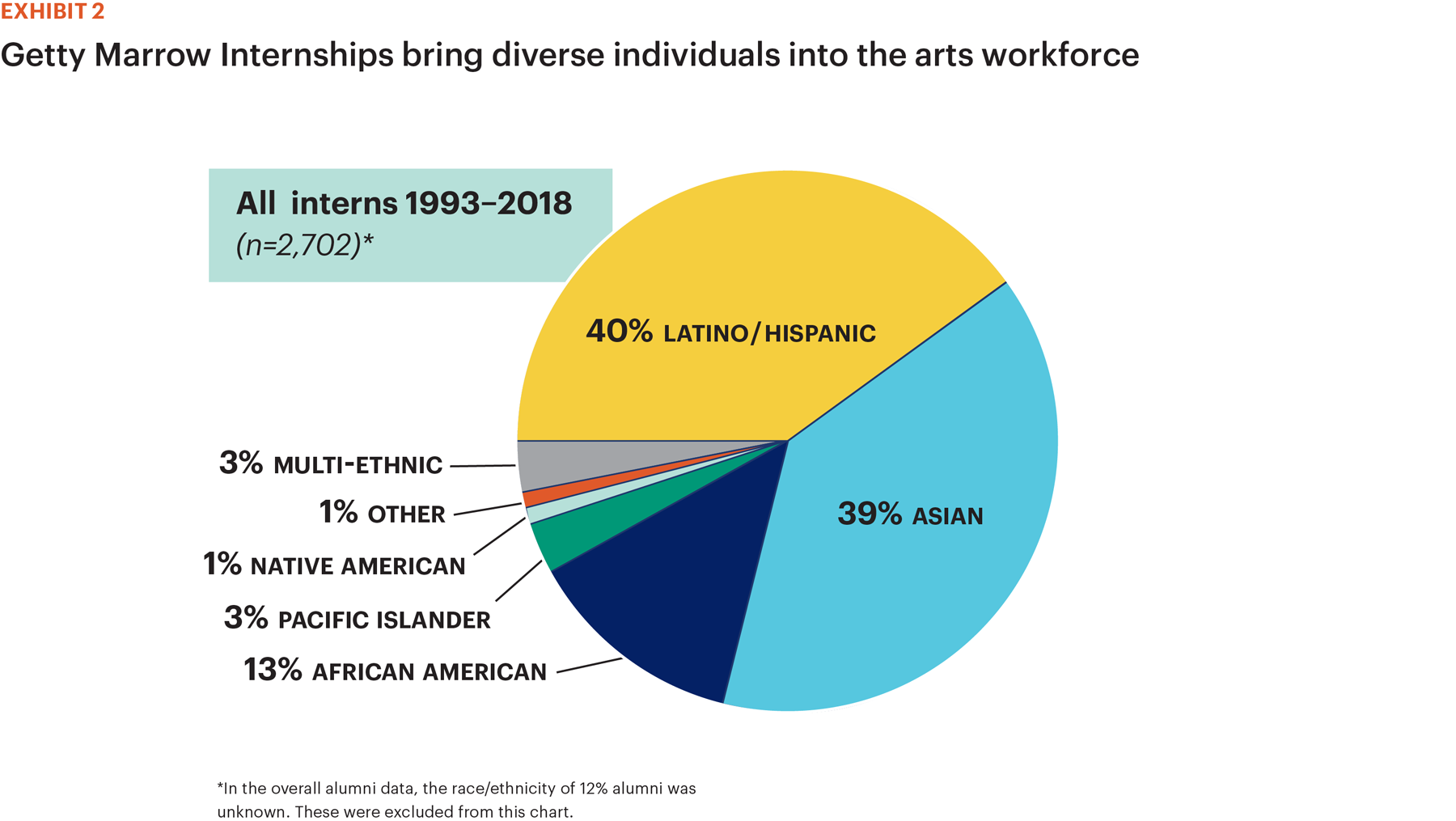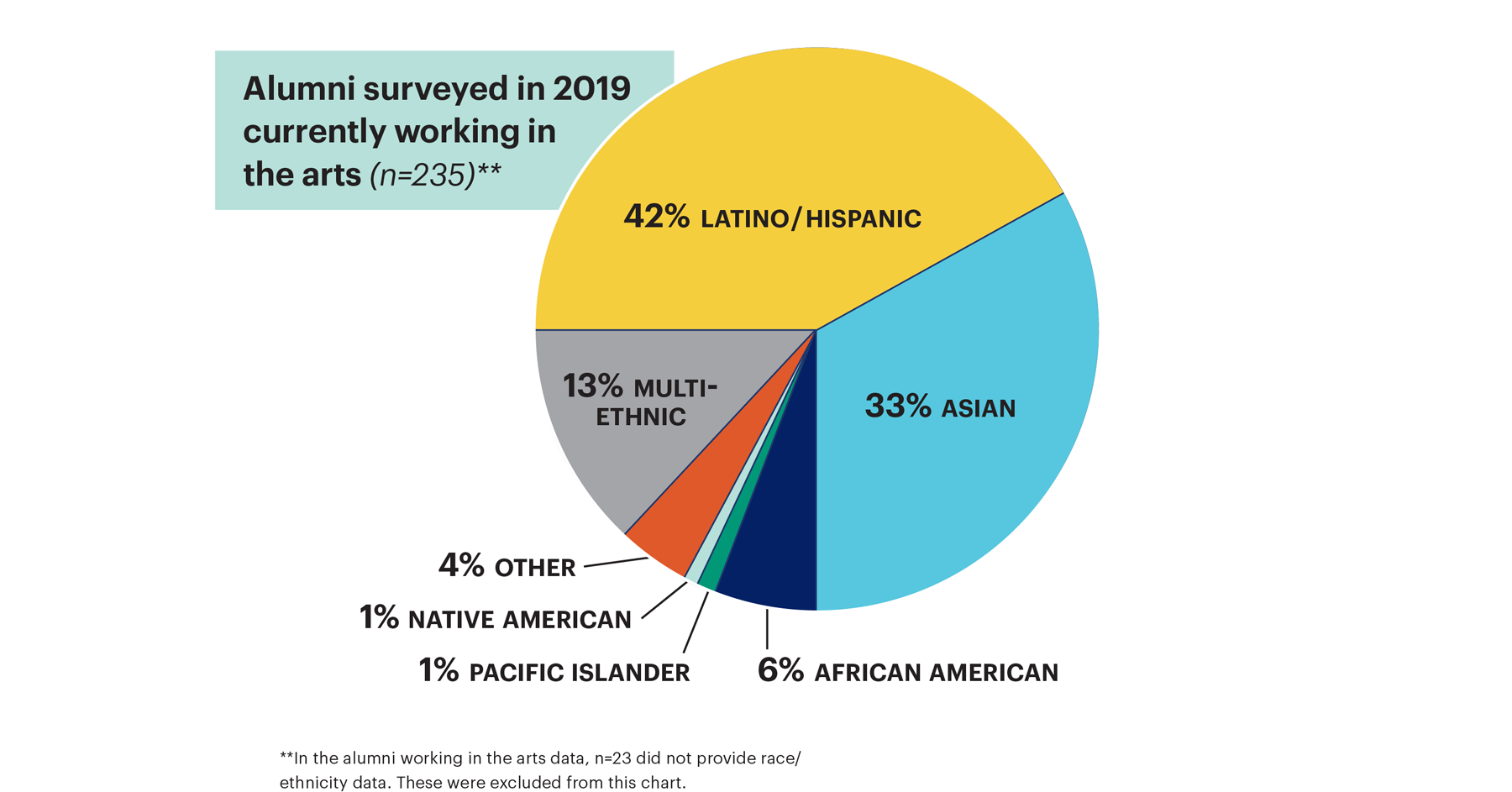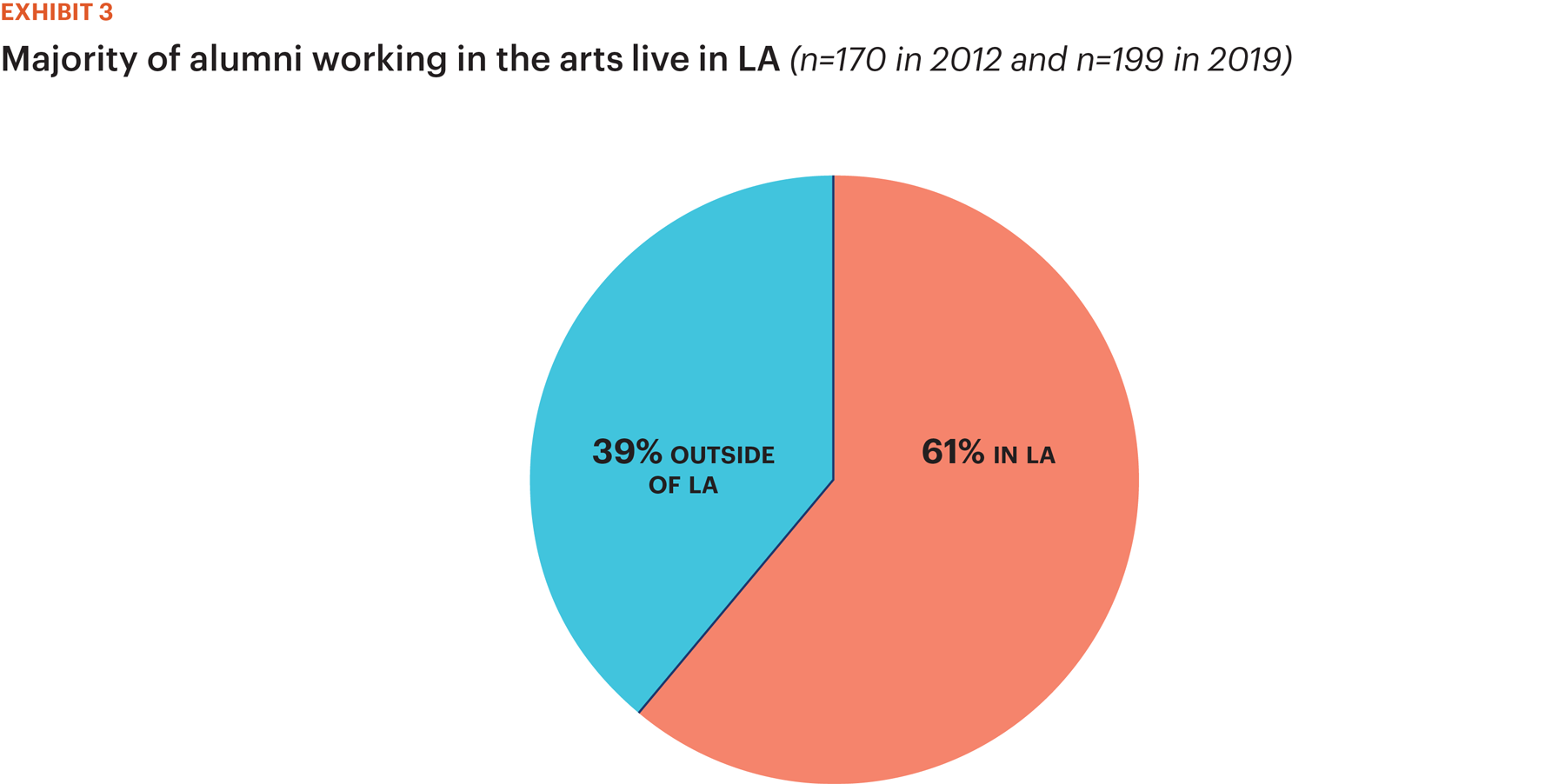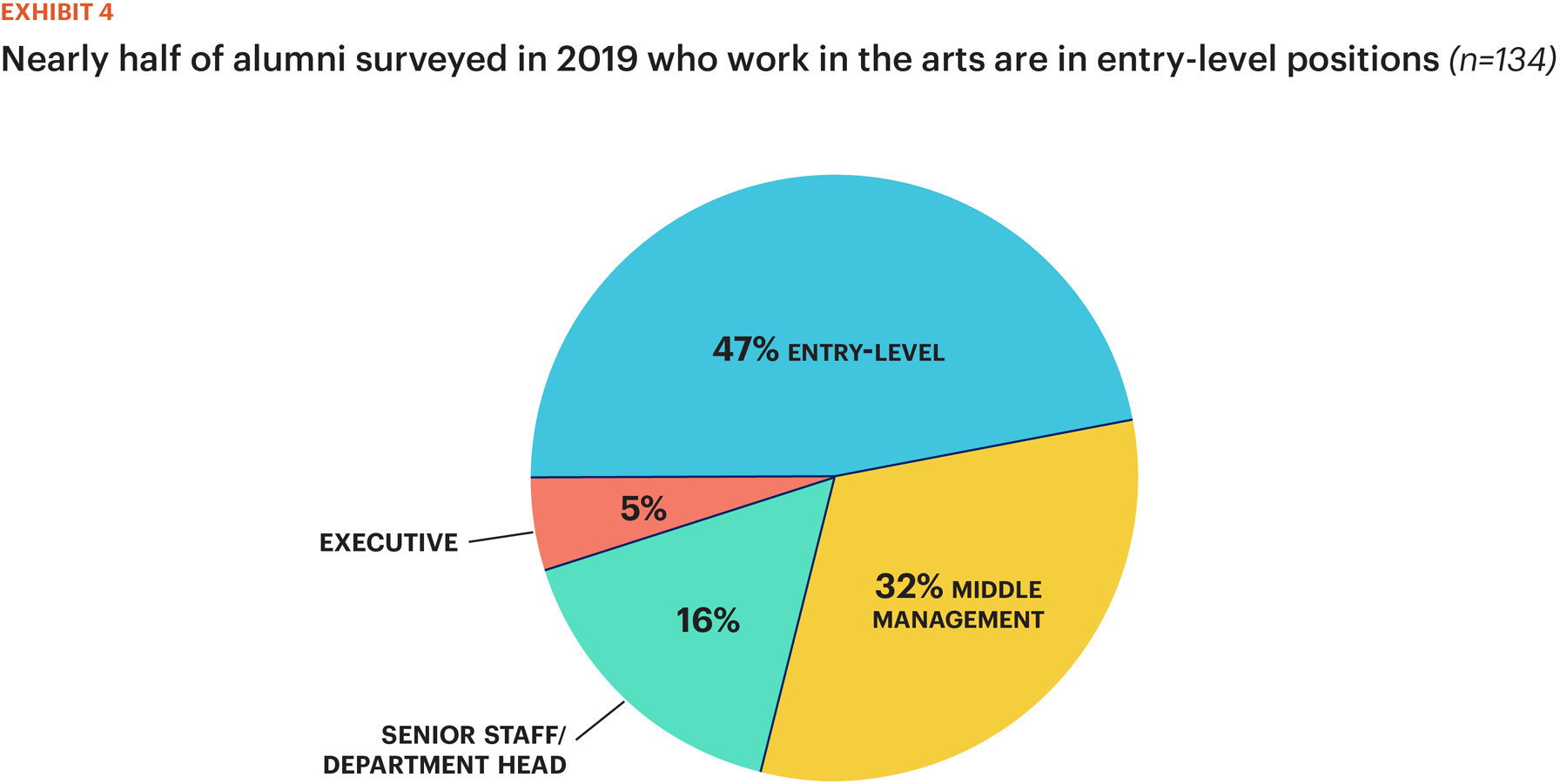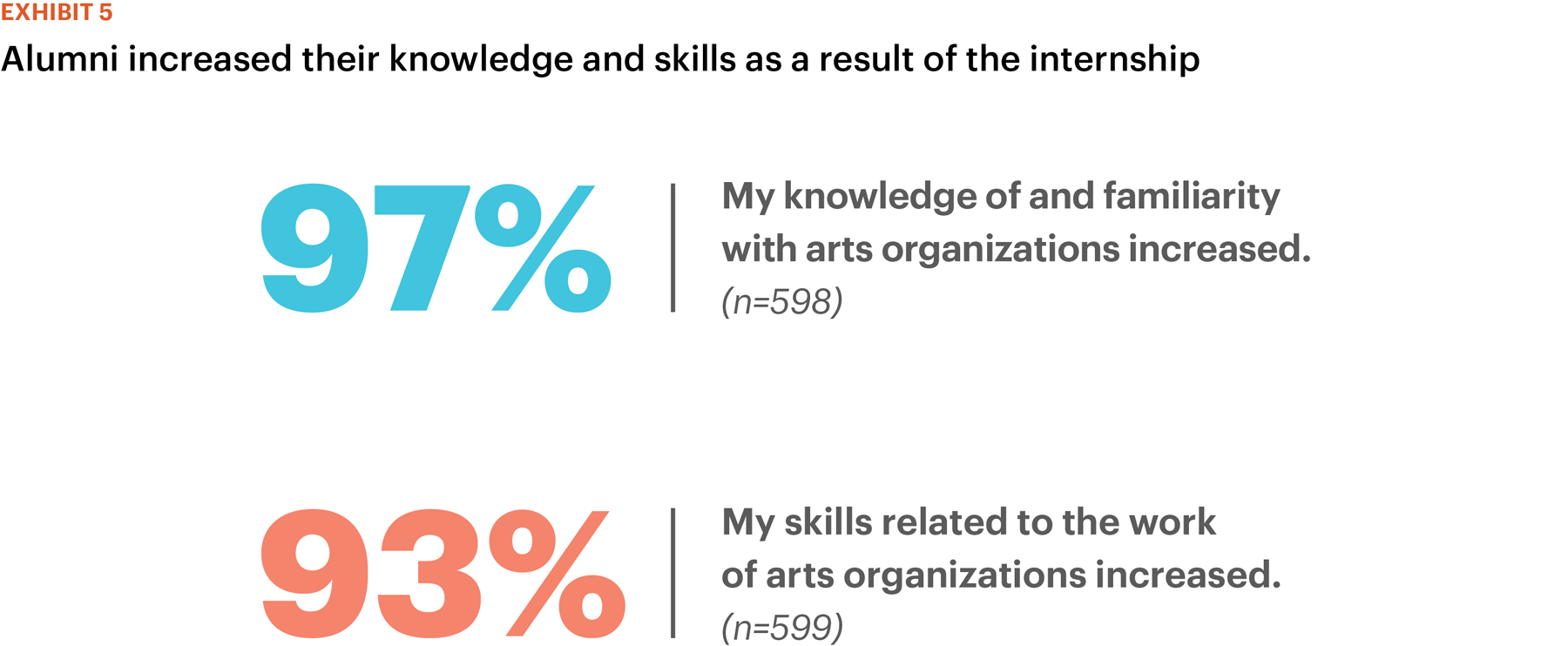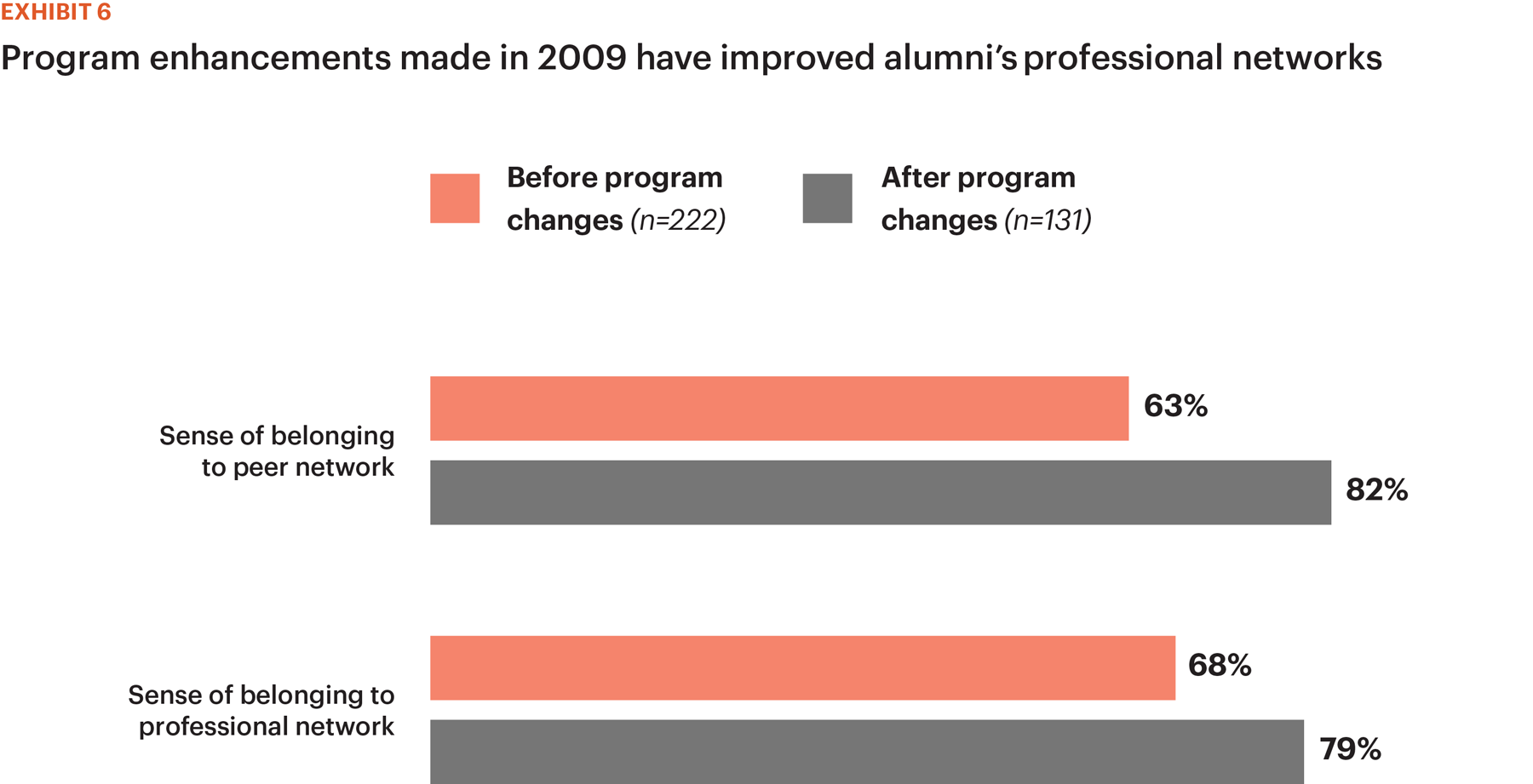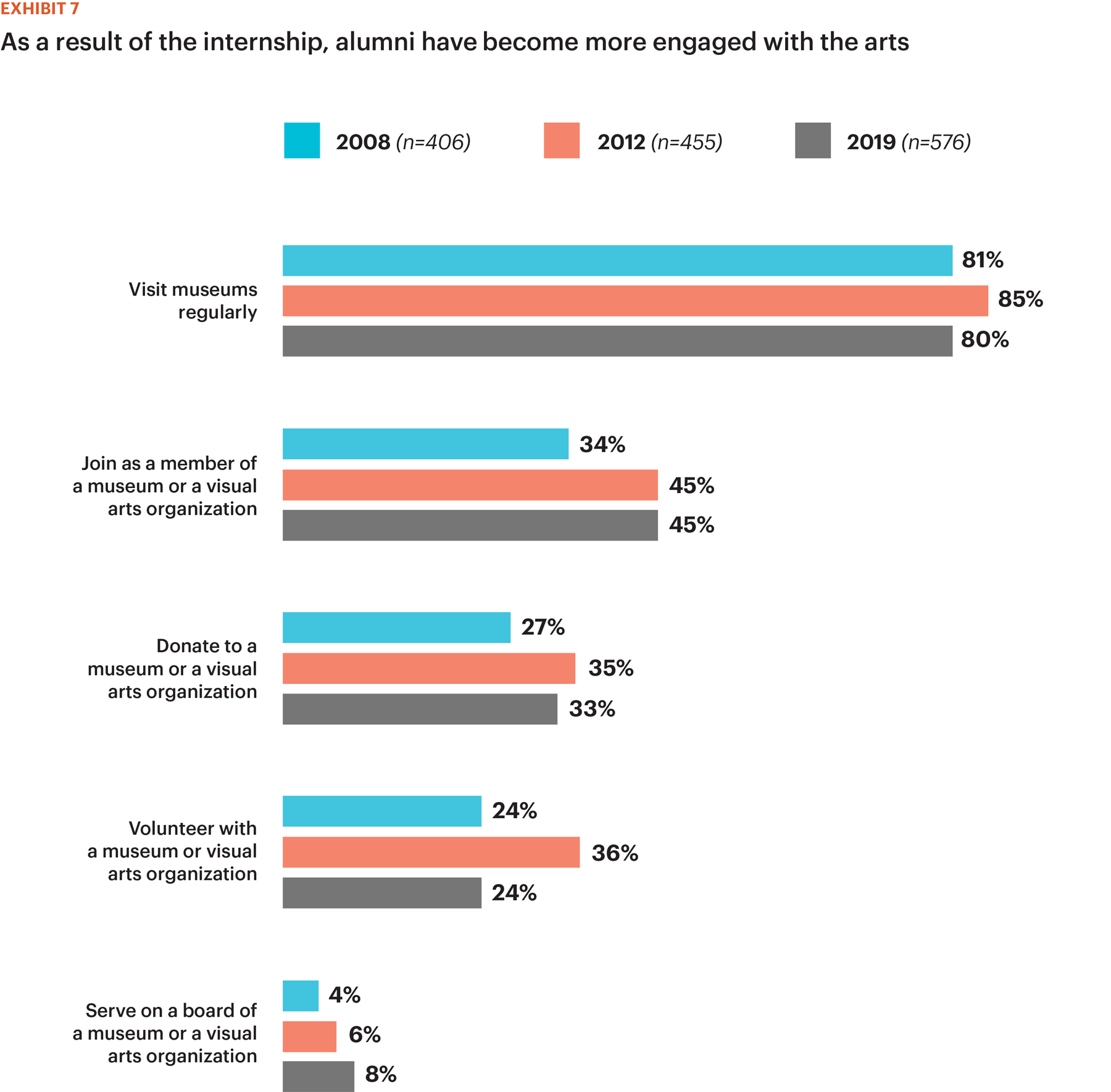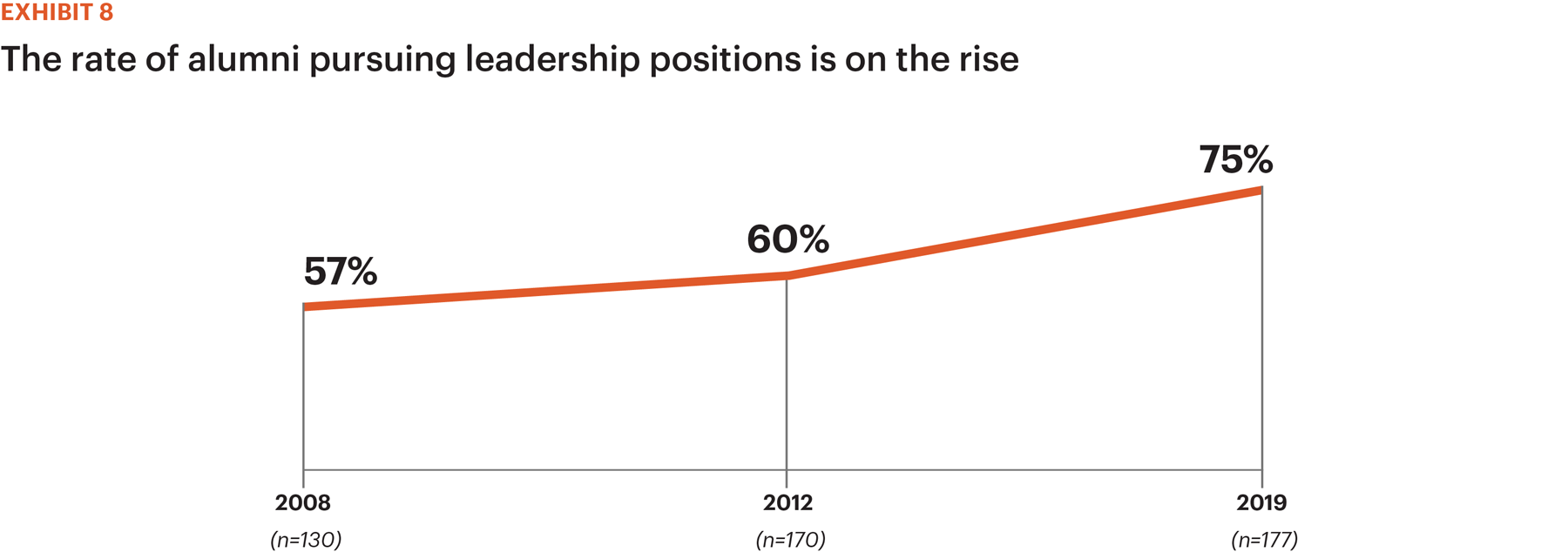Program Impact
Getty Marrow internships significantly impact the lives of many alumni. They build participants’ foundational knowledge, skills, and professional networks, and play a key role in alumni’s decisions to work in museums and visual arts organizations. Even for those who are not pursuing careers in the arts, the program has enhanced their interest in and commitment to the arts in other ways. The following section outlines the range of this impact.
Getty Marrow internships bring individuals from underrepresented groups into the arts workforce
When the Getty Foundation created the internship program almost 30 years ago, the long-term goal was to diversify the staff of local museums and visual arts organizations. The primary strategy was to expose culturally underrepresented undergraduate students, many of whom had no previous experience in the arts, to career opportunities in museums through paid internships. The assumption was that some of the alumni would go on to pursue work in museums. Indeed, about one-third of alumni reported that they currently work in a museum or a visual arts organization (32% of alumni in the 2008 and 2019 surveys and 41% of alumni in the 2012 survey).
“Every opportunity I’ve had since the program can be traced back to the internship by one or two degrees.” Getty Marrow Alum
Among those not working in the field, 40% reported that their current job relates to the visual arts. Exhibit 2 shows the demographic distribution for all Getty Marrow interns as tracked through the Getty Foundation’s internal grants database and the 2019 survey respondents who reported working in the arts.
Nearly all alumni working in the arts surveyed in 2019 (92%) report that the internship influenced their decision to pursue a long-term career in the arts. This marks a significant increase over time (up from 81% in 2008 and 78% in 2012). The power of the internships is also evidenced by the fact that the more internships an individual holds, the more likely that individual is to be working in the arts: 39% of Getty Marrow alumni who completed two internships and 50% of those who had three or more internships are working in the arts compared to 30% who had one internship.
Location, Job Types, and Recruitment
The majority of alumni working in the arts live in Los Angeles (see Exhibit 3), and the percentage has remained consistent over time. Surveys show alumni are working across a range of areas within the arts, with the largest areas being curatorial and education, followed by collections/registrar, administration, and public programs. Conservation is a core area of museum work in which there is very little alumni representation. The 2019 survey began tracking the job level of alumni in the arts and found that those who identified as entry-level form the largest proportion of alumni (see Exhibit 4).
In interviews, some alumni working in the arts reported that they have observed a general increase throughout the field in recruitment and hiring of staff from diverse backgrounds, an insight that aligns with findings from the Art Museum Staff Demographic Survey (see note 1, in “The Model”) produced by the Andrew W. Mellon Foundation. One alum shared positive observations on the Los Angeles workforce: “I definitely see more people of color, more women, also younger folks represented. And that’s encouraging…. These diverse perspectives are an asset rather than a liability.” Survey data support this view, with 71% of alumni surveyed in 2019 agreeing that their intern organizations had diverse staff. But not all interns take such an optimistic view. As one alum put it, “I have seen a shift, but it isn’t enough.” Among the reasons offered by alumni for this underrepresentation are perceptions of limited employment opportunities, racial bias, and low pay.
Getty Marrow internships build knowledge and skills for working in the arts
There is no prerequisite of experience in the arts or declaring an arts-related undergraduate major to participate in the internship, and many alumni did not come in with either. Overall, as a result of their internships, alumni reported strengthening their knowledge and skills related to the work of museums and visual arts organizations (see Exhibit 5).
An important element of building knowledge is the exposure the program provides to the visual arts field in general, including to different lines of work and types of arts organizations. One alum explained, “For me it wasn’t a real thing to work in the visual arts…. It seemed more like a hobby.” The internship shifted that perspective. “Now I know that these are real careers and that they’re out there.” For over half of the interns, this exposure translated into a desire to learn more, with 66% of alumni reporting that they took subsequent undergraduate coursework related to the visual arts and 67% pursuing additional experiences with museums and visual arts organizations. The engagement with humanities coursework stands in contrast to higher education data that show continuing downturns in this area of study due to a perceived lack of employment potential.1
Interns develop valuable professional relationships
About two-thirds of alumni surveyed in 2019 (68%) maintain an ongoing relationship with host organizations or supervisors. Alumni who stay in touch with their supervisors and other mentors receive support such as help securing new jobs and advice on professional goals.
Alumni also find value in the professional and peer networks nurtured by the internship. Getty Foundation staff has enhanced this aspect of the program over time in response to feedback provided by interns. Based on these findings, program components were substantially revised in 2009. Getty added more structured peer-to-peer activities in the form of Learning Communities that bring together interns from different organizations in geographically determined clusters. Interns also gain exposure to greater numbers of professionals outside of host organizations through the Learning Communities and through Arts Summit, an annual career day hosted at the Getty. These adjustments have helped to create a greater sense of belonging to a network of peers and arts professionals (see Exhibit 6).
The Getty Foundation has also created other platforms for alumni to connect post-internship. One alum said, “Getty has done a good job about periodically checking in with alumni because I haven’t lived in Southern California for years, but I still feel part of the program.” Since many alumni stay connected with peers and mentors through social media, Getty has created a dedicated alumni Facebook group where alumni and Foundation staff share job postings and professional projects. Getty also provides support for alumni working in the field to attend annual conferences of professional museum organizations, as well as periodic leadership and career-development programs.
Interns from historically underrepresented groups feel more welcome in the arts
A few alumni spoke about how the field’s lack of people of color can be discouraging or intimidating for those considering a career in the visual arts. “There’s a certain look, a certain professionalism, a certain kind of background that comes with being affiliated with the museum space or gallery space,” recounted one alum. “I didn’t think I met that quota at all.” But many expressed that Getty’s program provided a greater sense of confidence that there was a place for them in the arts and the motivation to continue pursuing their career goals.
“The internship really did lay the groundwork for feeling like my perspective was valued to the museum profession.” Getty Marrow Alum
Many alumni also explained how the program’s reputation provided legitimacy and helped secure parental support. “Being able to have ‘Getty Internship’ on my resume at that young of an age just put me ahead of [others]. The Getty is so prestigious, so I felt like I could be taken seriously,” explained one alum. Another shared that “the internship made it a lot easier for me to talk to my family about a career in the arts … and support from them was really important.”
Internships increase alumni involvement with the arts
The value of Getty Marrow internships extends beyond preparing individuals from diverse groups for art careers. Various metrics point to significant engagement with the arts by all alumni (see Exhibit 7), regardless of whether they work in a museum or arts organization. A vast majority (88%) of alumni stated that their internships caused them to be more interested in and excited about the field of museums and visual arts. “Through my internship experiences, I knew I wanted to be connected to the arts in some capacity,” said one alum working outside of the arts. “Even if I didn’t work in the field, I would volunteer or try to align my professional work to support the visual arts.”
It is worth noting that, since 2008, the rate of alumni service on the board of directors of arts nonprofits as a result of their participation in the internship program has doubled. Even though the overall percentage is modest (8% of alumni surveyed in 2019 reported serving on the board of a museum or visual arts organization compared to 4% in 2008 and 6% in 2012), this growth is an encouraging step towards greater diversity in executive bodies that exert tremendous influence in the arts.
Alumni in the arts are pursuing leadership positions
Evidence suggests that alumni are increasingly seeking out senior positions, regardless of how long they’ve been in the field (see Exhibit 8). Over half (59%) of alumni surveyed in 2019 reported that they have progressed or are able to progress in their organizations to positions of increased seniority.
Of the 21% of the respondents who noted an inability to progress in their organization, 64% reported holding entry-level jobs. Lack of funding and lack of opportunity to advance are the main roadblocks to progression cited by this group.
“We’re seeing more people in positions of power and a lot more creative control for curators and museum professionals of color.” Getty Marrow Alum
Interviews revealed that alumni who are in senior-level positions are making a conscious effort to bring a diversity and equity lens to their work as well as taking concrete steps to hire more people of color. “I can be inclusive in my hiring practices. Because I am now in a position of authority, I can effect change,” said one alum.
Notes
Benjamin Schmidt, “The Humanities Are in Crisis,” The Atlantic, August 23, 2018, https://www.theatlantic.com/ideas/archive/2018/08/the-humanities-face-a-crisisof-confidence/567565/ ↩︎
